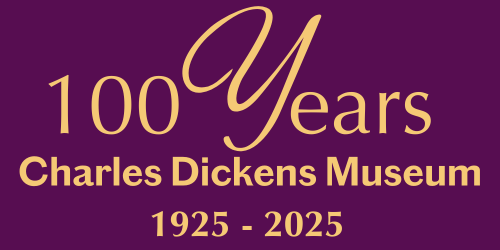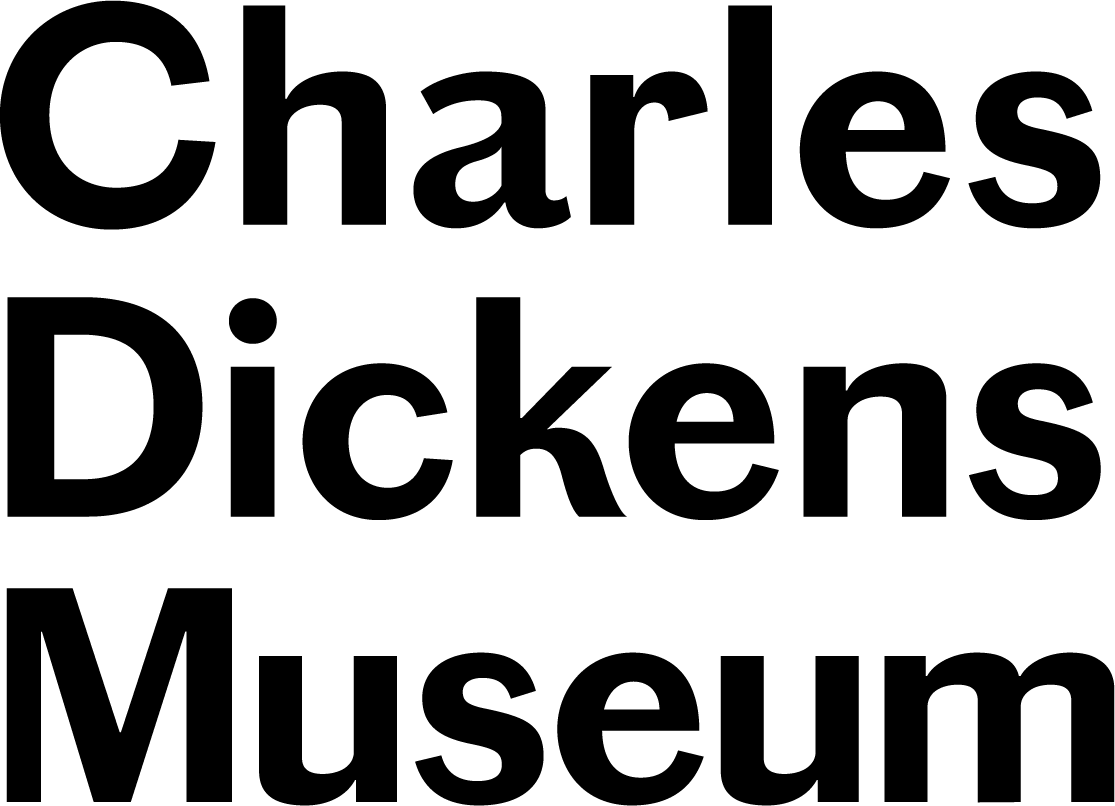Dickens Land: Big Issue Foundation’s Big Night Walk 2018 by Dr Cindy Sughrue

Charles Dickens C.1860s, image part of the Charles Dickens Museum Collection
From child poverty in Oliver Twist to factory conditions in Hard Times, Charles Dickens (1812-70) is famous for exposing injustice in his fiction. It’s perhaps less well known that he was also a prolific journalist, editor and activist who campaigned powerfully for social change.
Known the world over as the author of A Christmas Carol and a host of classic novels, Dickens also pioneered new forms of journalism – including investigative reporting based on first-hand experience. He had a keen interest in ‘street level’ problems and he informed himself by walking the streets of London. He walked every day, and often at night, at a pace and over distances that would leave most of us breathless and exhausted. His walks brought him face-to-face and into ‘sympathetic relations’ with people of all backgrounds and circumstances, and the writing that followed revealed what life was like for the most desperate in society.
When Dickens was away from London, he found it difficult to write ‘in the absence of streets’. In a letter to his friend John Forster, he wrote:
a day in London sets me up again and starts me. But the toil and labour of writing, day after day, without that magic lantern, is IMMENSE!!!
The Charles Dickens Museum is pleased to support The Big Issue Foundation and its Big London Night Walk 2018/9. (Due to the adverse weather conditions the 2018 walk has unfortunately had to be cancelled but the route will be used for next year’s walk.) The 13 mile route passes many locations that feature in the writing of Charles Dickens, as well as the Charles Dickens Museum.
Here we highlight a selection of locations along the route with connections to Dickens, his writing, and the issues of his day – some of the locations have changed little since that time, and some of his observations are still remarkably fresh.
Clerkenwell Road and Saffron Hill
This is Oliver Twist territory.

Clerkenwell Road was built in the late 1850s and 1860s to create a new east-west route across London. It was driven through slums districts, skirting Saffron Hill, the setting for Fagin’s den in Oliver Twist. Indeed, many new roads in this period were de facto slum clearance schemes, as well as measures for improving traffic flow. The Victorian offices and warehouses that survive, therefore, are largely from the second half of the century.

Hatton Wall. Yard leading to back of Police Court, Holborn, C. 1900s, image part of the Charles Dickens Museum Collection

Little Saffron Hill, C. 1900s, image part of the Charles Dickens Museum Collection
Hatton Garden, which runs off Saffron Hill, is now well-known for expensive jewellery shops, but it was once at the heart of a notorious area of great squalor, poverty, misery and crime. Number 54 Hatton Garden is where Dickens sets the police office and magistrates court run by Mr Fang in Oliver Twist where Oliver is brought after being arrested for picking Brownlow’s pocket.

Saffron Hill, Fagin’s den, C.1900s, image Charles Dickens Museum Collection
This area was also among the inspirations that led Dickens to write his masterpiece A Christmas Carol (1843). In September 1843 he visited a ragged school for impoverished children here and was powerfully struck by what he witnessed.
Cavendish Square is something of a hotspot for Dickensian characters. The unscrupulous banker Merdle of Little Dorrit, who commits suicide when finally bankrupted, resides in adjoining Harley Street. In Nicholas Nickleby, Mrs. Mantalini, the dressmaker who exploits struggling Kate Nickleby, has her premises in the square. Likewise, the manipulative Silas Wegg sells his shoddy wares on a street-corner in the Square where he encounters the naïve dust-heap millionaire, Mr. Boffin (Our Mutual Friend). All these characters have one thing in common: they are made miserable by money.
Mr Merdle was immensely rich; a man of prodigious enterprise; a Midas without the ears, who turned all he touched to gold. He was in everything good, from banking to building. He was in Parliament, of course. He was in the City, necessarily. He was Chairman of this, Trustee of that, President of the other. The weightiest of men had said to projectors, ‘Now, what name have you got? Have you got Merdle?’ And, the reply being in the negative, had said, ‘Then I won’t look at you.’
Charles Dickens, Our Mutual Friend, 1865
Silas Wegg in Cavendish Square from Our Mutual Friend, image part of the Charles Dickens Museum collection, DH748
Covent Garden Market
This was the main wholesale market for vegetables, fruit and flowers in central London from the 18th century until 1974. Charles Dickens was familiar with the market from his arrival in London in 1822 (aged 10) and particularly two years later when he was working at Warren’s Blacking Factory nearby.
Covent Garden market appears in much of Dickens’s fiction. David Copperfield dines in a hotel on the piazza and also buys flowers here for Dora. Tom Pinch wanders around the market in Martin Chuzzlewit, Arthur Clenham lives here in Little Dorrit, and Pip finds lodgings here in Great Expectations. In his essay ‘Night Walks’, Dickens describes the market in vivid detail:
Covent-garden Market, when it was market morning, was wonderful company. The great waggons of cabbages, with growers' men and boys lying asleep under them, and with sharp dogs from market-garden neighbourhoods looking after the whole, were as good as a party. But one of the worst night sights I know in London, is to be found in the children who prowl about this place; who sleep in the baskets, fight for the offal, dart at any object they think they can lay their thieving hands on, dive under the carts and barrows, dodge the constables, and are perpetually making a blunt pattering on the pavement of the Piazza with the rain of their naked feet.
Charles Dickens, Night Walks, 1860

View of Covent Garden Market, C.1900s, image part of the Charles Dickens Museum Collection
Waterloo Bridge
The former incarnation of Waterloo Bridge was built by John Rennie, opened in 1817 and demolished in the 1930s. It was a toll-bridge for much of the nineteenth century and famed as a common spot for suicides (a reputation cemented by Thomas Hood’s poem ‘Bridge of Sighs’). Dickens chronicles a crossing of the bridge in Night Walks:
Drip, drip, drip, from ledge and coping, splash from pipes and water-spouts, and by-and-by the houseless shadow would fall upon the stones that pave the way to Waterloo-bridge; it being in the houseless mind to have a halfpenny worth of excuse for saying ‘Good-night’ to the toll-keeper, and catching a glimpse of his fire. A good fire and a good great-coat and a good woollen neck-shawl, were comfortable things to see in conjunction with the toll-keeper; also his brisk wakefulness was excellent company when he rattled the change of halfpence down upon that metal table of his, like a man who defied the night, with all its sorrowful thoughts, and didn’t care for the coming of dawn. There was need of encouragement on the threshold of the bridge, for the bridge was dreary … the river had an awful look, the buildings on the banks were muffled in black shrouds, and the reflected lights seemed to originate deep in the water, as if the spectres of suicides were holding them to show where they went down. The wild moon and clouds were as restless as an evil conscience in a tumbled bed, and the very shadow of the immensity of London seemed to lie oppressively upon the river.
Charles Dickens, Night Walks, 1860
St. Paul’s Cathedral
St Paul’s Cathedral appears as a setting in many novels and it is in an area Dickens would have known well. In Master Humphrey’s Clock, Dickens describes Master Humphrey going up to the top of St Paul’s Cathedral, then the tallest building in London, for the panoramic City view. He writes: ‘Draw but a little circle above the clustering housetops, and you shall have within its space, everything with its opposite extreme and contradiction, close beside’.
St. Paul’s was as much a tourist attraction in the nineteenth century as it is today, costing two pence to enter the church, sixpence for the Whispering Gallery, and a shilling to see the crypt and vaults. David Copperfield takes Peggotty to the top of the dome, when showing her the tourist spots of London. The sight of the grand cathedral, however, provides no comfort for the starving crossing-sweep Jo in Bleak House, as he wanders the city in search of a place to bed down for the night:
Jo moves on, through the long vacation, down to Blackfriars Bridge, where he finds a baking stony corner wherein to settle to his repast. And there he sits, munching and gnawing, and looking up at the great cross on the summit of St. Paul's Cathedral, glittering above a red-and-violet-tinted cloud of smoke. From the boy's face one might suppose that sacred emblem to be, in his eyes, the crowning confusion of the great, confused city--so golden, so high up, so far out of his reach. There he sits, the sun going down, the river running fast, the crowd flowing by him in two streams--everything moving on to some purpose and to one end--until he is stirred up and told to "move on" too.
Charles Dickens, Bleak House, 1853

View of St. Paul’s Cathedral down Fleet Street, 2012, Andrea Arts
Dr Cindy Sughrue OBE is the Director of the Charles Dickens Museum.
With thanks to Lee Jackson for his assistance with this blog.
Museum Blog
This blog takes you behind the scenes at the Charles Dickens Museum, giving fresh insight on everything from discoveries new and old in our collection, to exhibitions, events and learning initiatives.
You’ll be hearing from a variety of Museum staff and volunteers, as well as guest curators, academics, artists and Dickens enthusiasts. Why not join the debate and let us know you thoughts on the latest blog by using our hashtag #CDMBlog


